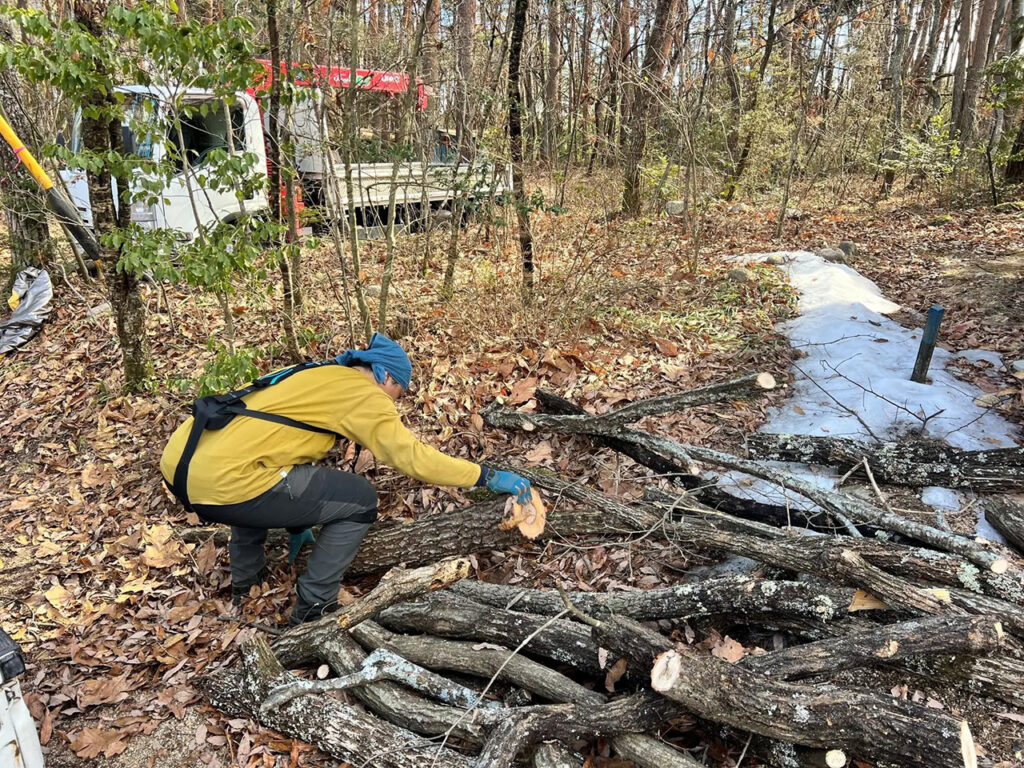Updated by "Forest Circular Economy" Editorial Board on May 29, 2025, 4:18 PM JST
Editorial Board, Forest Circular Economy
Forestcircularity-editor
We aim to realize "Vision 2050: Japan Shines, Forest Circular Economy" promoted by the Platinum Forest Industry Initiative. We will disseminate ideas and initiatives to promote biomass chemistry, realize woody and lumbery communities, and encourage innovation in the forestry industry in order to fully utilize forest resources to decarbonize the economy, strengthen economic security, and create local communities.
Innofis, a manufacturer and seller of assistive suits, recently delivered its "Muscle Suit Soft-Power(R)," which reduces the burden on the user's back, to Omachi Forestry, a forestry business based in Omachi City, Nagano Prefecture. The supportive power generated by the artificial muscles assists in tasks such as clearing away trees and carrying them out after felling.
This product is a wearable work support device developed by Innofis, a start-up company from the Tokyo University of Science. The user can wear it to support their movements and reduce the load on their hips and back during work. The muscle suit, which provides both support and ease of movement, was developed in collaboration with Nihon Sigmax, whose business domain is physical activity support.

This product belongs to the "supporter type (endoskeletal type)" of assistive suits, and was developed based on the technology cultivated in the Muscle Suit series to date. Assist technology based on artificial muscle technology is installed in the rear part of the supporter to create high supportiveness. According to the demonstration tests conducted by INOFIS, it can reduce the burden on the lower back by 35% compared to conventional products. In addition, compared to "exoskeleton-type" assistive suits, the main body weighs only 430g and offers a high degree of freedom of movement, making it suitable for tasks that require a lot of movement, such as walking and crouching.
Oomachi Forestry, which is engaged in the forestry business with tree felling as its main business, introduced the new system. The company said that there were some sites where heavy machinery was not allowed, and the physical burden of clearing up after logging and carrying out heavy materials by hand was an issue.

Carrying heavy loads and leaning forward at forestry work sites puts a strain on the hips and back, causing back pain and fatigue-related stress. Physical strain not only lowers work efficiency, but is also a factor that leads to the separation of forestry workers from their jobs, and immediate countermeasures are needed.
Although technological innovation has increased the number of forestry tasks that can be replaced by machines, there are still many tasks that must be performed manually. Assist suits have the potential to make a significant contribution to reducing the workload and improving the working environment in forestry.